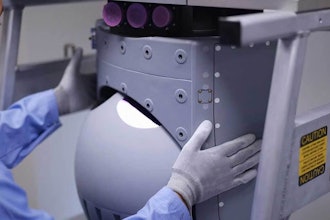Scientists from the University of California-Berkeley believe a newly developed material could allow power plants to cheaply and easily capture carbon emissions.
According to a report in the journal Nature, Berkeley researchers modified metal composites with nitrogen compounds called diamines. The resulting molecule can bind with carbon dioxide at varying temperatures and without the presence of water.
The material also releases the carbon dioxide after it's heated by 50 degrees, which would ease the process of sequestering the gas, or injecting it underground.
Researchers said the current process for carbon capturing at power plants can consume about 30 percent of the power that's generated, and that alleviating requirements for both water and for higher temperatures could lower plant costs dramatically.
“Carbon dioxide is 15 percent of the gas coming off a power plant, so a carbon-capture unit is going to be big,” said UC-Berkeley chemist Jeffrey Long, senior author of the report.
The scientists said they originally hoped to develop a process to capture and expel carbon from submarines, but that it could be scaled up for natural gas plants and, eventually, coal-fired power plants.
The analysis predicted power plants would eventually be required to capture their carbon emissions in order to combat climate change. Long said his research showed the process can reduce carbon dioxide levels at room temperature from the current 400 parts per million atmospheric concentration to 300 ppm.
Scientists Develop New Carbon Capture Technology
Scientists from the University of California-Berkeley believe a newly developed material could allow power plants to cheaply and easily capture carbon emissions.
Mar 19, 2015
Latest in Global






















